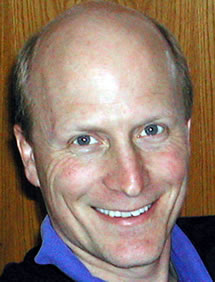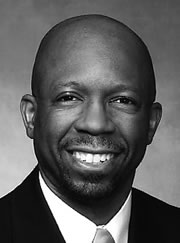ConnectRichmond: Collecting and Sharing Information to Build a Stronger Community by Nancy Stutts
"What is the best that higher education can contribute to communities?" The Campus Community Partnership of Metro Richmond posed this question to community leaders. What they said is now changing the way local nonprofits work together. Together, academics and citizens developed ConnectRichmond.org, a dynamic local nonprofit network and a website aimed at using information and technology to build the capacity of the local independent sector. Decision-making in the last 20 years in Richmond, Virginia's conservative capital city, has been dominated by politics—especially the politics of race and business interests. As in most of the country during this same time, the local nonprofit sector grew tremendously, yet still had no consistent voice in policy debates. Instead, it focused almost exclusively on the day-to-day challenges of critical need, a reality that forfeited the broader solutions offered through public policy.

| "ConnectRichmond is a good example of the innovation that can arise from collaborative, community-driven research toward social change. The technology is relatively simple for a university to maintain and the information is a thoughtful application of the intellectual capital that is inherent in academic environments. The community supplies the ongoing creative impetus for social problem solving." Robert Hackett, Vice President, The Bonner Foundation |
Seeing the potential for facilitating significant improvement, faculty member Richard Couto and a few students in the Jepson School of Leadership Studies at the University of Richmond founded the Campus Community Partnership in 1993 to work with the nonprofit community to put the resources of higher education to work on community problems. Today, it remains a loose consortium of faculty and students from diverse area institutions—J. Sargeant Reynolds Community College, the University of Richmond (private, privileged, suburban), Virginia Commonwealth University (large, urban, public) and Virginia Union University (private, historically African-American). For years, the Partnership staged special events, placed student volunteers in community and nonprofit programs, and sought answers to problems through community-driven research. Two years ago, through a series of community-wide meetings, the Partnership helped assess needs on a wider scale to develop the next phase. Like many urban areas, Richmond and its surrounding counties struggle with a multitude of public policy issues and human service needs. Nonprofit, public agencies, and the citizens those agencies serve said that both resources and communication were fragmented. This fragmentation applied to those working to improve the quality of life and those seeking to access services. Strategic decision-making stalled, as did making a case to funders about market position, impact, cost effectiveness, or future direction. Organizations could not take full advantage of resources that would build each organization's capacity to do its job and reach its potential for public service. How the Resource Network WorksAt the heart of a diversity of requests was a need to be united—hence ConnectRichmond was born in fall of 2001. At the core of the network is its first product, an email list that enables each member instant access nearly 600 Richmonders with an interest in community. Evaluation data indicate that users pass on messages regularly, reaching another 1,500-3,000 people.

| Reginald Gordon: "Successful outcomes for the people we serve will be increased exponentially as we take advantage of the technology that brings us together and keeps us informed." Reginald E. Gordon, Director, Homeward, which is integrating services for the homeless provided by some 90 different agencies in the region. |
This communication infrastructure results in: Next, we tackled the wish for centralized access to local information, using university expertise to create a web-based resource, which the community was responsible for shaping. Students dug up local research reports, scoured databases, and located national sites that lead to local information. As it's developed, the site is made up of three elements: A news section, updated weekly with information about legislation affecting nonprofits or their target populations, relevant local news and postings submitted by the community (e.g., funding opportunities, items for donation, upcoming events, collaboration opportunities, and job postings), and news from the national nonprofit research and funding world. We also post information on upcoming workshops, conferences, and seminars. The Community Research Clearinghouse, featuring reports, research results, statistics, and other data on diverse issues such as health, housing, homelessness, education, and poverty. The Nonprofit Resource Center, which provides links to nonprofit management and philanthropy programs at local colleges and universities, instruction and resources on collaboration, evaluation, advocacy, technology planning, and much more. A section for grant makers includes information on accountability, recent trends in philanthropy, and hyperlinks to organizations and news for and about philanthropy in metro Richmond and the United States.

| "ConnectRichmond has done a phenomenal job of pulling together a content-rich site of information relevant to the ongoing work of nonprofit organizations and creating a vibrant communications tool for the local charitable sector. As ConnectRichmond continues to develop, we foresee a time in the not-too-distant future, when the site will be able to map services, identify service gaps as they are juxtiposed against local demographic trends, as well as to help policy makers and funders evaluate program and organizational effectiveness locally." Darcy S. Oman, President, The Community Foundation serving Richmond & Central Virginia |
Community ImpactPerhaps the most dramatic result is the momentum the network has spurred. A year after the ConnectRichmond website launched, community-initiated projects that are enhanced by the network abound and the network is positioned at the center of a community evolving toward revolutionizing grassroots organization participation in local decision-making. For example: The National Higher Education Community Research Project, a Learn-and-Serve funded initiative of the Bonner Foundation, championed by its Vice President, Bobby Hackett, is advancing community-driven research in seven communities. The Partnership facilitates metro Richmond's community-driven research teams and the request-for-proposal process, including gathering community research requests and connecting with appropriate faculty occurs readily because of the infrastructure ConnectRichmond provides. - Xperts, a local IT developer, is building a web-enabled architecture for nonprofits that will link and support their services, house data, develop low-cost customized software, and provide ConnectRichmond with a source of service-based funding. Last year, Reggie Gordon, Director of Homeward, Richmond's regional coordinating agency for homeless services, joined ConnectRichmond, Xperts, and DNDS.com, a local web design and hosting company, to work toward piloting this architecture among the homeless services organizations in the area.
Capital One, one of the largest employers in Richmond and an active corporate citizen, is partnering with ConnectRichmond to distribute recycled computers to nonprofit organizations in the metro area, monthly, beginning in April. A group of nonprofits led by the YWCA of Richmond, struggling with the "how to"of outcome evaluation, recognized that the information available on the web site could not move them from "knowing" to "doing," so the group asked ConnectRichmond to convene monthly gathering and link group members through an email list. The University of Richmond has received funding from the Jessie Ball duPont Fund to launch five, one-year faculty-student community alliances that will map geographic concentrations of needs, as well as locations of assets that meet those needs, using Geographic Information Systems (GIS). J. Sargeant Reynolds Community College and Virginia Commonwealth University, both Partnership institutions, have started small, college-based businesses that employ soon-to-graduate IT students to get hands-on experience serving the nonprofit sector with affordable networking services. A Chamber of Commerce youth initiative, Virginia Commonwealth University and the University of Richmond are working with regional nonprofit organizations to capture and make available data that both small organizations and government offices already generate to facilitate resource allocation, strategic planning, and setting community, agency, and governmental priorities; community mobilization and self-direction; community and client needs assessments, grant writing, and advocacy; client tracking and service monitoring; and program evaluation and accountability to funders.
The immediate goal of ConnectRichmond—to provide the nonprofit community centralized access to information to make the most of each organization's assets—is being realized daily. To operate ConnectRichmond, we are building elements of financial self-sufficiency, but still largely depend on generous grants from the progressive local Community Foundation serving Richmond & Central Virginia and other local funders that value capacity building. The ultimate goal--to use knowledge to generate social change that improves the future for all citizens--will require transformation at the policy, organization and individual levels, which does not come quickly, simply or without rancor. Richmond cannot claim to be transformed, but it is on its way.
copyright 2003 by Nancy Stutts and University of Richmond
|
